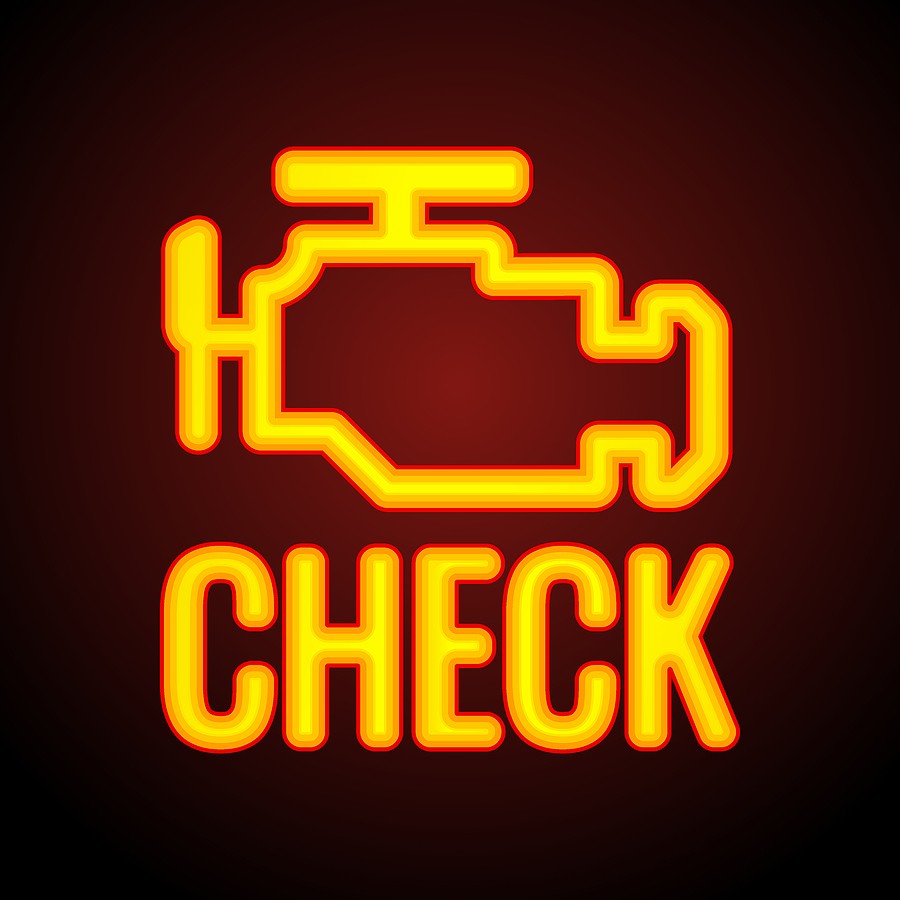The check engine light is one of the most important warning lights in your car. It means that something is wrong with your engine, and it's not just a minor issue. In fact, if you ignore the check engine light, you could end up doing serious damage to your car – and costing yourself a lot of money in repairs.
It's not uncommon to see a check engine light on your dashboard. This article will tell you everything you need to know about what it means and how to deal with the situation!
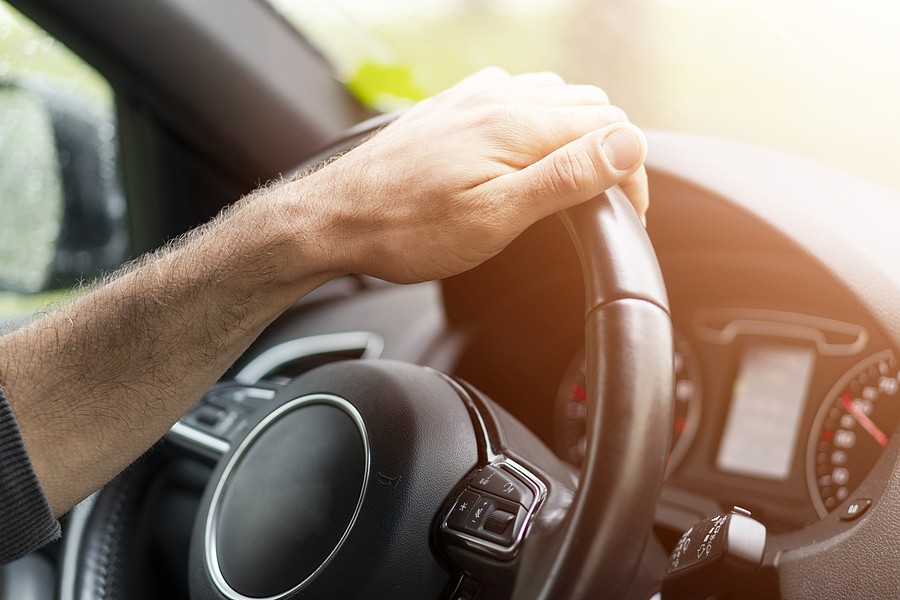
What does the check engine light mean?
It means your car is telling you that there's a problem. A check engine light can have many different meanings, from something minor to something major.
Try not to ignore your check engine light, as that could end badly for you and your car. Generally, the light will go off after a short time if it's just a minor problem, but major problems need immediate attention.
10 causes for a check engine light illuminating
When you notice a check engine light on the dashboard, the problem might be related to a variety of culprits. However, automotive experts put together a list of the top 10 causes for a check engine light coming on. Let's take a closer look below:
A faulty oxygen sensor
Your oxygen sensor is faulty. This doesn't mean you need to replace your entire catalytic converter as some mechanics would have you believe.
A loose fuel cap
A loose fuel cap could affect your vehicle's emissions. Turn off the engine and tighten up that gas cap, then take it to a mechanic if the problem persists.
A bad ignition coil
Your ignition coils may be faulty, but the solution isn't a new set of spark plugs – it's actually a replacement ignition coil pack, which can solve all kinds of problems!
A malfunctioning catalytic converter
You may need to replace your catalytic converter if you got a replacement part and the check engine light is still on.
A damaged spark plug
Replacing your spark plugs will usually solve this problem, but it's worth checking for any other faults as well, such as faulty coils or oxygen sensors!
A bad fuel injector
This kind of problem could be solved by using a fuel injector cleaning service – don't just drive around with a broken air filter until it breaks completely!
A faulty transmission
Have the transmission fluid checked – this problem often goes hand-in-hand with having no power when driving or shifting gears roughly.
A problem with the electrical system
This means there's a major fault in your car's electrical system – have a qualified mechanic look at it as soon as possible.
Misfiring
A misfiring spark plug means your car won't run smoothly until you fix it, which should only take around 10 minutes per spark plug if you know what you're doing!
a faulty oxygen sensor
The oxygen sensor will need to be replaced and the check engine light may return later on too, even after replacement…that's not something to worry about though!
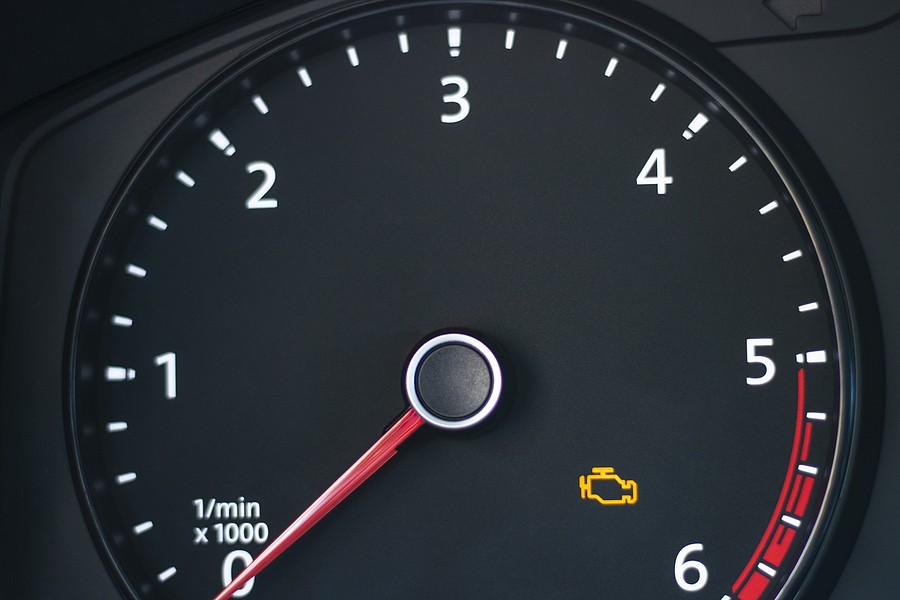
How to diagnose a check engine light?
The easiest way to diagnose a check engine light is using some of the special scanners designed for this purpose.
An OBD scanner is a simple tool, which will work with any car manufactured since 1996. Basically, you plug it into your car's computer and get the same information a mechanic would see when examining your engine.
However, this is NOT an official diagnostic tool from automotive manufacturers! Even so, they're affordable enough to make it worth your while.
These scanners don't cost much and it's worth every cent! A lot of mechanics now use them because it saves them money, too. You can actually diagnose your own check engine light now like this:
- Firstly, buy an OBD scanner for your car. If you're not sure which scanner to buy, ask your nearest mechanic or Google for advice.
- Plug in the OBD scanner to your car's diagnostic port (usually under the steering wheel column).
- Wait for the check engine light to come on, then press “read.” The full list of codes will appear on your scanner's screen.
- After the shortlist of codes has appeared on the display, make a note of them and look up their meaning online. This should help you figure out what the problem is, for example, P0301 means a misfiring spark plug or a faulty ignition coil pack.
- Once you know what the problem is, fix your car's check engine light issue. This isn't necessarily a complex task – you could just have a faulty oxygen sensor or something else that can be replaced easily.
- After you've replaced the part that was causing the problem, clear your check engine light by pressing “clear.”
- If the engine light comes back on later after using your OBD scanner, it will be because there is another fault in the system. This doesn't necessarily mean you have to replace the part that triggered the check engine light last time – just read the codes again and see what all of them are this time around.
- Fixing everything at once could end up costing you a lot of money! It's much better to do things one at a time.
How to reset the check engine light?
As we mentioned earlier, the check engine light won't go away by itself. You'll have to manually reset it. To do so, follow these simple steps:
- Remove the negative cable from the battery;
- Wait for 30 seconds
- Start the vehicle regardless of whether or not it turns on
- When the vehicle is running, place its transmission in the park and turn it off again (remove key). Now you should see that the check engine light has gone!

How to prevent a check engine light?
There are a few ways you can prevent the check engine light from coming on without having to do any repairs.
- Keep your windshield free of dirt and bugs – it makes it harder for sensors to read your speed, fuel usage, etc!
- Avoid driving fast on rough roads or across lots of potholes – this can damage your car's suspension or tires.
- Avoid driving long distances on worn-out tires – this could damage your car's brake pads, too.
- Keep your gas cap tightly closed whenever possible – any loose gas cap can lead to a check engine light if it isn't working correctly.
- Prevent your catalytic converter from overheating by never revving your engine; instead, gently accelerate and try to avoid sudden stops.
- Keep your tires properly inflated – this will lower fuel consumption as well as prevent any damage that might lead to a check engine light.
- When your car is idling, keep it in neutral or turn it off completely – never allow the vehicle's engine to idle in park or drive.
- Check your windshield wipers for wear and tear – if they're old, replace them with ones that are in good condition (or invest in some rain-x glass treatment).
With these simple tips, you can prevent the check engine light from coming on without having to do any repairs! That way you can save yourself money as well as take care of your vehicle.
How to fix check engine light problems?
You can begin by checking your gas cap. The check engine light will come on if your gas cap is loose or missing. You should just tighten it as much as you can, and it should definitely work to prevent further problems from the same source.
If that's not the case, then you could have a problem with your catalytic converter. If your car is losing speed, then it means the converter isn't working as well as it should. The best thing to do in this case is to take your car to a professional mechanic who can look at all of your engine parts for you and make sure everything is still working properly.
If the check engine light keeps coming on even though you tightened the gas cap and replaced your converter, then it's possible that there is a problem with your vehicle's oxygen sensor. This requires a bit more work to replace, but a simple Google search should provide you with information on how to fix the problem yourself.
These are just some of the ways that you can repair or prevent problems from arising with your check engine light. Remember that it doesn't always mean you need to replace expensive parts; sometimes, drivers make the mistake of taking their car to a mechanic every time the check engine light comes on without doing any further research or checking if they can fix the problem themselves.
If you take your car to the mechanic every single time the check engine light comes on, then you're going to spend an awful lot of money. It's easy for mechanics to take advantage of your lack of knowledge and charge you a high price when all you needed was an oxygen sensor replacement and the problem could have been solved without problems.
Remember that if you want to fix any problems with your check engine light, you should try to do it yourself first. That way, you can learn more about your car's engine and how all of the parts work together!

Can I drive my car if the check engine light is illuminating?
Driving your car with the check engine light on can be dangerous, especially if you know that there's a problem with your vehicle. In some instances, the car might stall while you're driving and put both yourself and other drivers in danger of an accident.
If you suspect there is something going wrong with your car, take it to a professional mechanic to find out what the exact problem is and get it fixed. It would be a shame if something were to happen to you or other drivers on the road because you decided to just drive your car without getting your engine checked up first.
How much does it cost to fix a check engine light?
A check engine light can be a serious problem for your car, and it's likely the light will only get worse if you don't fix it.
The cost of fixing a car's check engine light will depend on what exactly is wrong with the vehicle and why the light keeps coming on. A simple change in oxygen sensors might just cost around $75, but you might need to change the catalytic converter if there is an exhaust leak. Replacing a catalytic converter can cost around $1200 depending on your car model and how long it's been since the converter was replaced last.
If you want to avoid spending too much money at once on your check engine light, make sure you do some research first on how to fix it yourself. It can often cost you less than $50 if you're able to do the work on your car's engine, and that's money you could save for other expenses.
Should I fix the check engine light or sell my car?
If you have a problem with the check engine light, it's important to get this fixed as soon as possible. If you don't, then your car will not perform properly and people could be injured in accidents due to poor gas mileage.
Once an issue arises with your vehicle, getting it repaired is important because it might just save someone's life. If you don't focus on fixing your car's problem, then it could be more likely that someone gets injured in an accident later down the road.
However, if repair costs are very high, it might make more sense to sell your car instead of fixing it. Repairing a car that has been in several accidents without taking care of the issues might cost you a lot of money. If that's the case, then it would be better to sell your car and get a new one.
What are the 10 most common check engine light error codes?
The check engine light can come on in many different colors because there are so many different types of error codes. However, the most common ones include:
1) “P0441 Evap Emission Control Small Leak Detected”
2) “U1013 Engine Speed Sensor Intermittent Failure”
3) “P0420 Catalyst System Efficiency Below Threshold (Bank 1)”
4) “P0315 Crankshaft Position Sensor A Circuit Malfunction”
5) “P0171 System Too Lean (Bank 1)”
6) “U1093 Loss of KAM Warning Lamp Driver circuit”
7) “P1780 Engine Coolant Overtemperature Condition”
8) “P2195 Throttle/Pedal Position Sensor/Switch D Circuit Malfunction”
9) “U1039 Misfire Detected Low Fuel Level (Cam/Rotor/Injector)”
10) “P0107 Manifold Absolute Pressure Sensor Range/Performance”
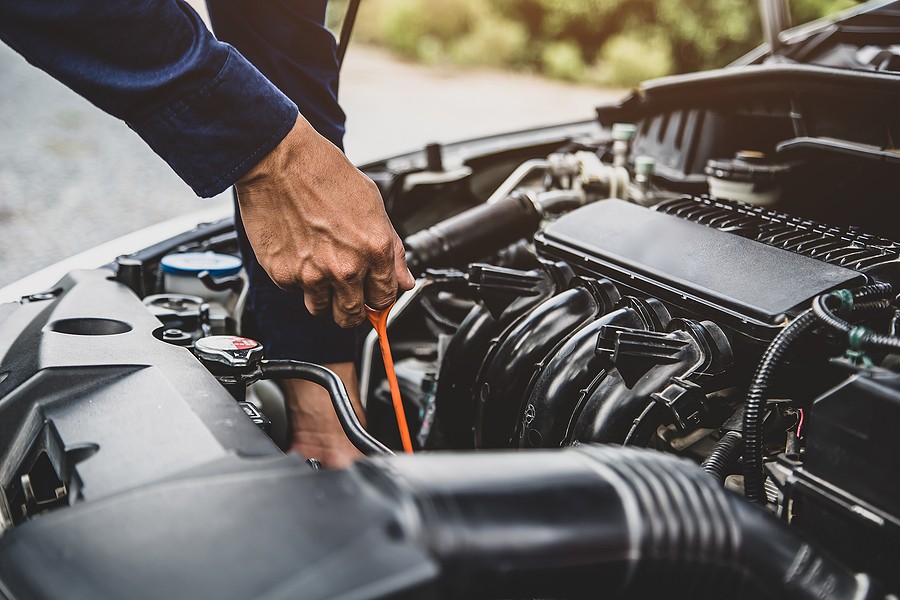
Can regular maintenance prevent checking engine lights?
Regular maintenance can go a long way towards preventing you from having to deal with the check engine lights.
For example, if your car needs an oil change and you neglect this for too long, then the oil might get too dirty and cause other parts of your vehicle to break down as well.
If you take good care of your car's maintenance, then it can help prevent more serious issues from happening later on, which might cause the check engine light to come on.
Keeping your car's oil clean and replacing filters regularly is key to maintaining your car. You should also have a mechanic look at your car every once in a while just to make sure that everything is running smoothly. This will allow you to avoid other problems that can cause the check engine light to come on, such as broken parts.
Check engine light: FAQs
In this section, we will cover some additional questions about the check engine light that helps you deal with the problem wisely and prevent negative consequences that could cost you thousands of dollars.
Does AutoZone the check engine light for free?
AutoZone will check your car's check engine light for free, but if they find that there are problems with your vehicle that are beyond their expertise, then you might have to pay a fee.
If you're not sure whether or not the mechanic at AutoZone is able to fix the problem with your car's check engine light after they've given you a diagnosis, then it's best if you take your vehicle to a trusted mechanic for further inquiries.
Although AutoZone offers free diagnostic checks on vehicle lights, this is a limited service. Additional repairs or services will be subject to a diagnosis fee if anything is found that exceeds the limits of their expertise.
Can the check engine light come on due to maintenance issues?
The check engine light can certainly come on as a result of an issue that needs repair, but the opposite is also true. Sometimes the light will even come on because there are no problems with your car's engine.
What could cause the check engine light to come on if maintenance isn't an issue?
The most common reason that there might be a problem with your car is because you haven't been keeping up with the service, which can help prevent this from happening. Sometimes all it takes is just one mistake or oversight for the check engine light to come on.
What should I do if there's a problem with my car's maintenance?
If you notice that your gas mileage has been poor, then it might mean that there is something wrong with your car and it could be because of problems with its engine. It's important to fix these issues as soon as possible to avoid other problems as well as wasting money on gas.

Is it okay to ignore the check engine light?
It's not a good idea to ignore the check engine light because it can lead to more severe problems with your car and save you money in repairs later down the line. If you notice that there is something wrong with your car, it's best to have it checked out immediately.
Don't let the check engine light ruin your day. Make sure that your car is in tip top shape by checking for possible problems before they become more serious issues that could end up costing you more money later on.
Don't simply ignore a check engine light because you might end up having to pay more for car repairs later on, which could've been prevented with regular maintenance and checks on your vehicle's health.
How long does it take to diagnose a check engine light?
It usually takes about half an hour to diagnose a check engine light. If you need more tests and inspections done on your car, then it's best if you call ahead and make an appointment so that the mechanics can get started right away.
Will the check engine light go off after tightening the gas cap?
If you think that the problem with your check engine light is just because of a loose gas cap, then it's best if you tighten it and see what happens. Sometimes this simple solution is all that you need to do to reset the light so that it turns off by itself.
However, the problem might be linked to other culprits requiring immediate assistance from a professional mechanic.
How long does check engine light stay on after replacing gas cap?
It will take about one to five days for the check engine light to go off after tightening the gas cap. This is just a rough estimate of how long it could take before your problem with the check engine light is solved, but you should still call a mechanic if the issue persists.
Can I fix the check engine light myself?
The check engine light can certainly be fixed by yourself, but it might also depend on what is causing the issue. Sometimes the problem is linked to another part of your car's engine which you will have to pay for a professional mechanic to fix if it comes down to that.
Is it worth investing in an OBD scanner?
If you want to make life easier for yourself, then it's best if you invest in an OBD scanner that will allow you to diagnose and troubleshoot problems present with your car. This is a tool that every driver should have and it could come in handy someday when you least expect it.
It can be risky trying to figure out what is wrong with your car on your own without any help. This is why it's best to invest in an OBD scanner if possible to avoid larger issues with your vehicle down the line.
What is a good OBD II code reader?
If you want a quick and good way to find out what's wrong with your car, then a good OBD II code reader would be just the thing that you need. They're fairly cheap and effective and they're easy to use too.
A good OBD II code reader will allow you to instantly check for any problems present with your vehicle's engine, which can ultimately save you a good deal of time and money in the long run.
How much does it cost for an OBD scanner?
An OBD scanner can cost anywhere between $100 to $200, which is certainly worth it if you plan on investing in one. Not only will they save you time and money, but they will also make life easier for yourself too.
Are all OBD scanners the same?
There are a few things that you should consider when it comes to OBD scanners such as what they do, their price and how well they work. It's best if you read online reviews about the product before purchasing anything because this way you will avoid making costly mistakes when buying one for yourself in the future.
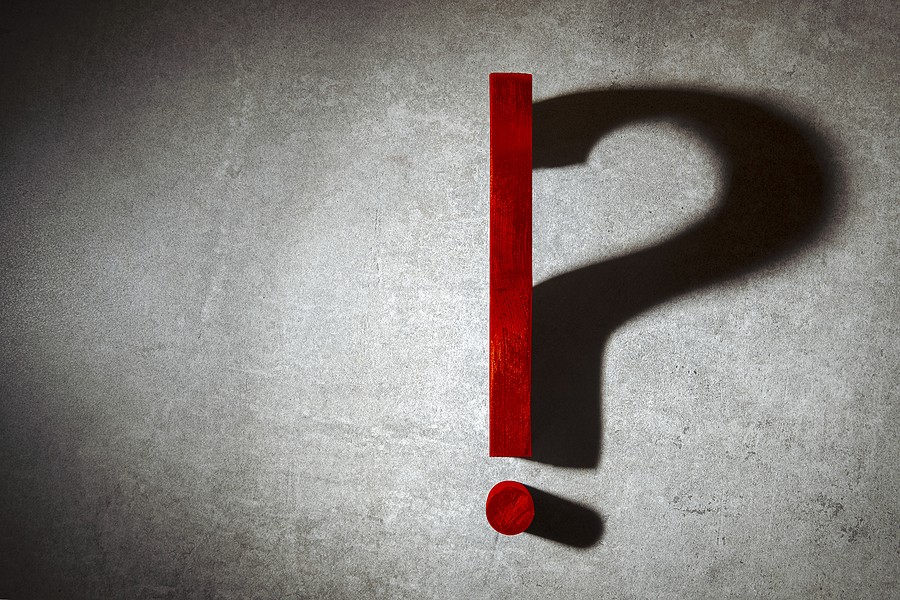
What are the 10 best OBD scanners in 2022?
The 10 best OBD scanners in 2022 will be based on their features, as well as their price and how popular they are. It's important to take these factors into consideration before buying a scanner for yourself, which is why it's best if you look online for reviews from other users first.
However, the following OBD scanners might just be the best that you can find and purchase. This is not a comprehensive list of OBD scanners that are available online, but it shows you the top-rated ones that people seem to be buying right now. If you want to make life easier
– 1. Actron CP9575 AutoCheck OBD II/EOBD Code Reader
– 2. Innova 3100 OBD2 Scan Tool
– 3. Autel AutoLink AL319 OBDII & EOBD Automotive Diagnostic Scanner
– 4. INNOVA 3160g Full System Scanner
– 5. Actron CP9125 PocketScan Code Reader
– 6. Autel MaxiSys Elite Auto Scanner
– 7. Innova 3130 3135 OBD2 Scan Tool
– 8. INNOVA 3120g OBD2 Scan Tool with Live Data
– 9. Actron CP9580 AutoScanner Plus OBD II/EOBD Code Reader
– 10. Actron CP9185 Elite AutoScanner Pro
Conclusion
The check engine light is the car's way of telling you that there may be a problem with your vehicle. It can have many different meanings, which could range from something minor to something major. If this happens and you're not sure what it means or how to deal with it, contact us for help! You'll want someone who has experience in automotive repair on their side when dealing with these types of issues.

